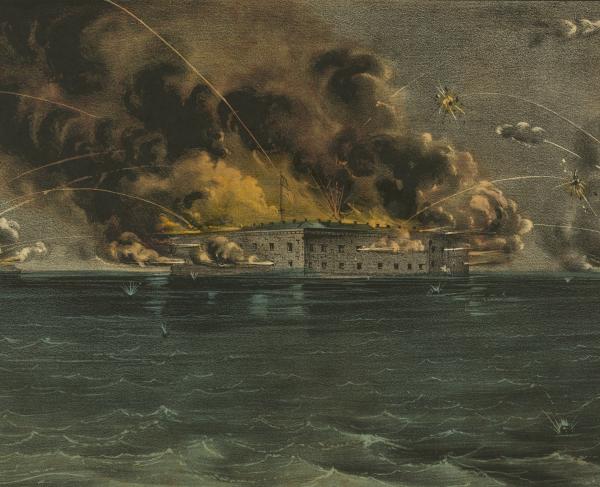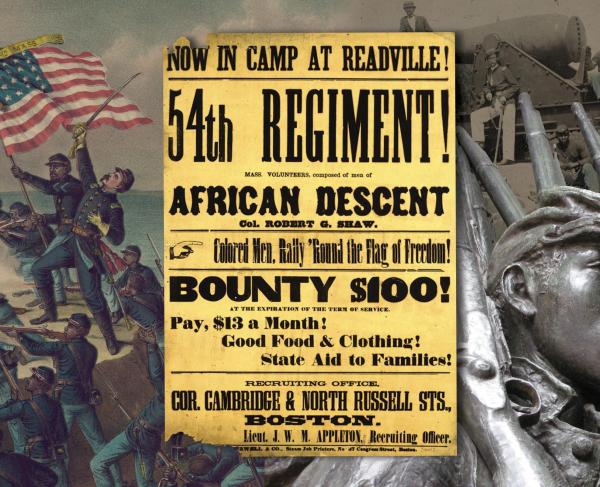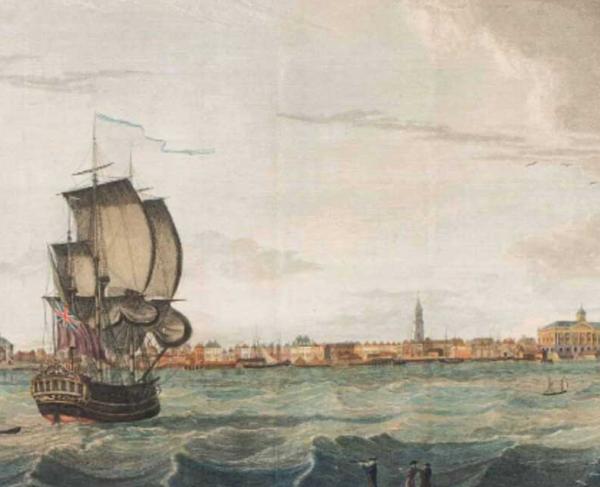Fort Wagner and the 54th Massachusetts Volunteer Infantry
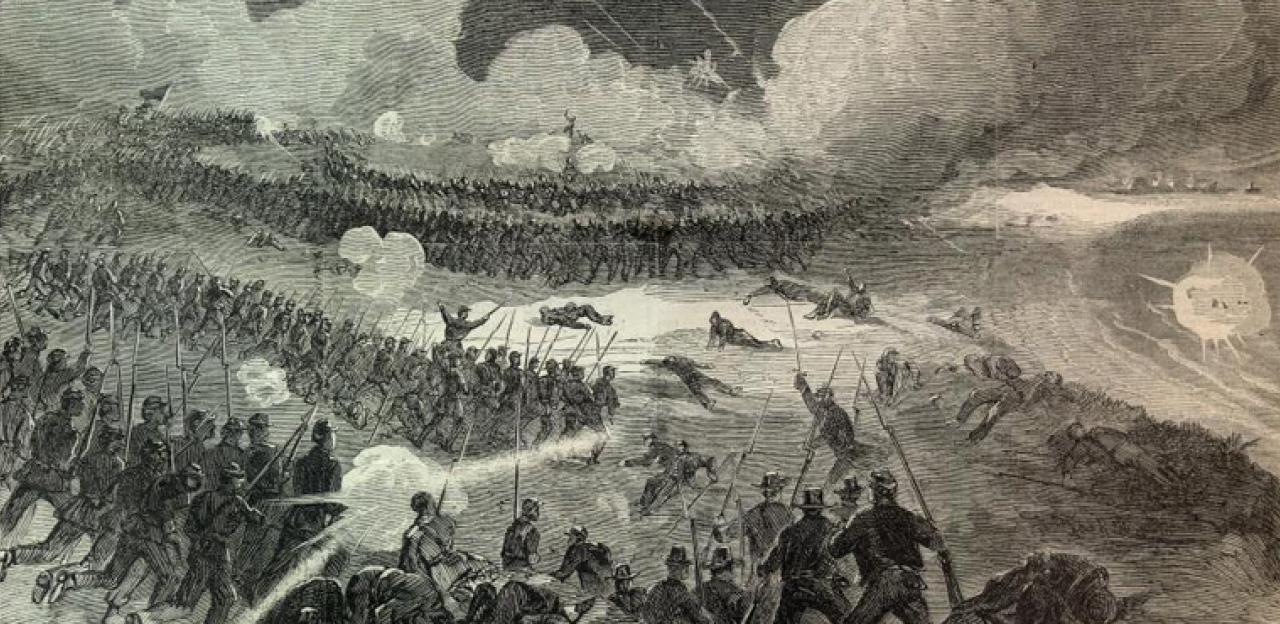
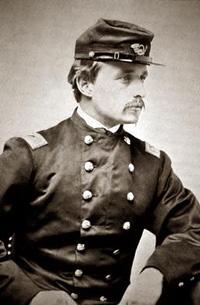
Tired, hungry and proud, the black soldiers of the 54th Massachusetts Volunteer Infantry stood in the light of the setting sun and awaited the call to battle on the evening of July 18, 1863. The air was filled with the rumble of big guns, and the very ground on Morris Island, South Carolina, trembled beneath their feet. The regiment’s baptism of fire had come only two days before, but the memories of that sharp skirmish had already begun to fade in the shadow of the awesome task that now lay before them.
The path that had brought these determined men to the embattled sands of South Carolina had been a long one, born of idealism and fraught with difficulty. That they had succeeded in the face of bigotry and doubt was due in great measure to the colonel who led them. Slight and fair-haired, Robert Gould Shaw appeared even younger than his 25 years. But despite his initial trepidations, the Harvard-educated son of abolitionist parents had assumed the weighty responsibilities of command, and never wavered in his fervent resolve to show friend and foe alike that black soldiers were the fighting equals of their white counterparts.
Suddenly, a mounted general and his staff rode up before the assembled ranks. The officer was handsome and smartly dressed, and grasped the reins of his prancing gray steed with white-gloved hands. Brigadier General George C. Strong pointed down the stretch of sand to the sinister hump of a Confederate earthwork that loomed amidst the roiling smoke and spitting fire of the guns. Loudly, Strong asked, ‘Is there a man here who thinks himself unable to sleep in that fort tonight?’ ‘No!’ shouted the 54th.
The general called out the bearer of the national colors, and grasped the flag. ‘If this man should fall, who will lift the flag and carry it on?’ After the briefest of pauses, Shaw stepped forward, and taking a cigar from between his teeth responded, ‘I will.’ The colonel’s pledge elicited what Adjutant Garth Wilkinson James later described as ‘the deafening cheers of this mighty host of men, about to plunge themselves into the fiery vortex of hell:’
The moment of trial for the 54th Massachusetts had come about through the appointment of a new Union commander, the then Brig. Gen. Quincy A. Gillmore, who had taken charge of the Department of the South on June 11, 1863, replacing the querulous and unpopular Maj. Gen. David Hunter. Stocky and balding, the 38-year- old Gillmore had stood first in the West Point class of 1849, and had gone on to make a name for himself as a talented and intellectually inclined officer of engineers. His successful siege of Confederate Fort Pulaski early in the war had secured the water approaches to Savannah, Ga., and had won Gillmore wide acclaim. The victory had also fueled his considerable ambition.
From the moment of his arrival in the department, Gillmore had set his sights on the capture of Charleston, S.C. To many Northern eyes, Charleston was the very bastion of the Southern cause-the birthplace of the rebellion, from which the first shots had been fired at the Union flag. Indeed, one of the most formidable of Charleston’s defenses was Fort Sumter, the battered island fortress whose capture had precipitated the war itself. Moreover, the commander of Charleston’s 6,000-man defense force was none other than General Pierre Gustave Toutant Beauregard, the engineer officer turned Confederate leader whose forces had compelled Sumter’s garrison to surrender two years before.
Gillmore viewed the reduction of Charleston as a logical sequence of strategic events that would bring an ever increasing rain of naval and artillery fire to bear on the city and its fortifications. Working closely with Rear Adm. John A. Dahlgren’s Federal fleet, Gillmore would seize Morris Island, whose low-lying sands commanded the defenses of the inner harbor. From Cumming’s Point on the island’s northern tip, Federal guns could reduce Fort Sumter, which had long prevented Federal ships from gaining access to the harbor. In order to get to Cumming’s Point, Gillmore’s 11,000 troops would first have to capture Fort Wagner and Battery Gregg, the Rebel fortifications that guarded the upper third of Morris Island.
The first part of Gillmore’s strategy went entirely according to plan. In the early morning hours of July 10, Strong’s brigade launched a surprise amphibious landing on the southern end of Morris Island. By late afternoon, the intrepid Strong had routed the island’s defenders back to their strongholds at Wagner and Gregg. Strong’s men took 150 prisoners, a dozen guns and five flags, and may well have overrun Fort Wagner itself, had Gillmore not been satisfied to rest on his laurels that day.
The Confederates had time to prepare for the assault that followed on July 11, and despite Strong’s personal initiative and the gallantry of his leading regiment, the 7th Connecticut, the Southern garrison was able to repulse the onslaught. Only 12 Confederates were killed or wounded, while the failed attack cost the Union 330 men. As more Union forces arrived on Morris Island, Gillmore pondered his next move.
Originally constructed as a battery, Wagner had grown into a fully enclosed fort. Named for slain South Carolina Lt. Col. Thomas M. Wagner, the work measured 250 by 100 yards, and spanned the southern neck of Cumming’s Point from the Atlantic on the east to an impassable swamp on the west. Its sloping sand and earthen parapets rose 30 feet above the level beach and were bolstered by palmetto logs and sandbags. Fourteen cannons bristled from its embrasures, the largest a 10-inch Columbiad that fired a 128-pound shell. Wagner’s huge bombproof, its beamed ceiling topped with 10 feet of sand, was capable of sheltering nearly 1,000 of the fort’s 1,700-man garrison. The fort’s land face, from whence any Union assault must come, was screened by a water-filled ditch, 10 feet wide and 5 feet deep. Buried land mines and razor-sharp palmetto stakes provided additional obstacles to an attacking force.
Eleven hours into the unprecedented land and sea bombardment, Gillmore had every reason to expect that a determined assault would carry the battered enemy earthwork. Gillmore’s chief subordinate, Brig. Gen. Truman Seymour, shared his commander’s confidence. Seymour had formed a part of the Regular Army garrison that surrendered Fort Sumter at the start of the war, and eagerly anticipated the day when Sumter-and rebellious Charleston-would again be in Federal hands. Strong, whose brigade would spearhead the charge, was won over by Seymour’s zeal. But not every subordinate was so sure of success. Colonel Haldimand S. Putnam, like Strong a graduate of the West Point class of 1857, would lead a four-regiment brigade in the second wave of the assault. ‘We are all going into Wagner like a flock of sheep,’ Putnam told his officers. ‘Seymour is a devil of a fellow for dash:’
Gillmore had launched his initial assault on Fort Wagner without artillery support. Determined not to repeat his mistake, he decided to precede a second effort with one of the heaviest cannonades of the war to date. The fort would be pulverized not only by entrenched land batteries, but by the guns of the Federal fleet, a formidable armada that included the USS New Ironsides, a veritable floating gun platform sheathed in iron. The shelling would commence on the morning of July 18, 1863.
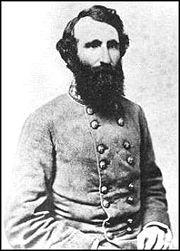
Four Federal land batteries opened fire at 8:15 a.m., and soon 11 ships of Dahlgren’s fleet were adding their salvos to the massive bombardment. After covering the fort’s guns with sandbags in hopes of protecting them from the ravages of Yankee shellfire, the bulk of the Confederate troops scurried for the shelter of Wagner’s bombproof. Brigadier General William B. Taliaferro, a 40-year-old Virginian and battle-scarred veteran of Stonewall Jackson’s campaigns, commanded the Confederate garrison. Taliaferro (pronounced Tolliver) fully expected the Federals to launch a land assault, and entrusted Lt. Col. P.C. Gaillard’s Charleston Battalion with the dangerous assignment of manning the ramparts during the bombardment. The South Carolinians hunkered down and breasted the iron storm as best they could.
As the afternoon wore on, the tide rose, allowing the New Ironsides and five smaller monitors to close to within 300 yards of the fort. The turreted ironclads were a fearsome sight; to Taliaferro they seemed ‘like huge water dogs, their black sides glistening in the sun:’ Naval shells weighing more than 400 pounds hurtled through the air with a terrifying roar that sounded to one Southern defender like ‘an express train.’ Occasionally the iron missiles would skip across the waves like huge pebbles, each smack as loud as a cannon shot. One huge projectile exploded just offshore and showered the fort with a school of dead fish.
Shell after shell burst over and within Fort Wagner’s ramparts, dismounting cannons and blasting wooden barracks and storehouses to splinters. In the words of one Southern officer, the fort was ‘pounded into an almost shapeless mass!’ Although most of the Confederates were safe within Wagner’s massive bombproof, the strain was immense as the structure reeled and shook around them. Taliaferro, would later write: ‘Words cannot depict the thunder, the smoke, the lifted sand and the general havoc; the whole island smoked like a furnace and trembled as from an earthquake!’ Waves of sand were blown over the exposed troops of the Charleston Battalion, and Taliaferro himself was buried to the waist while encouraging his beleaguered defenders. But despite the awesome tempest of fire, fatalities were few.
At 2 p.m., the halyards of the fort’s big garrison flag were severed and the banner fluttered to the ground. While four intrepid soldiers struggled to raise the fallen colors, engineer Captain Robert Barnwell planted a regimental battle flag atop the parapet to show the Yankees that the garrison remained defiant. Afternoon gave way to evening, and still the inferno raged. Then, shortly before sunset, the Union fire rose to a crescendo. Shadowy forms could be seen massing on the open beach, and Taliaferro readied his men for imminent attack.
As the light of the setting sun cast a lurid glow through the pall of smoke that hung over Fort Wagner, Shaw formed his black soldiers in the vanguard of the Union attack force. Earlier, Strong had tendered the 54th the dangerous post of honor. ‘You may lead the column,’ the general told Shaw. ‘Your men, I know, are worn out, but do as you choose!’ For Shaw, there had been no possibility of refusing the offer there was simply too much pride at stake.
‘His bearing was composed and graceful,’ Captain Luis Emilio recalled, ‘his cheek had somewhat paled, and the slight twitching of the corners of his mouth plainly showed that the whole cost was counted.’ Shaw deployed his 624 men in column of wings’–five companies in the first line, five behind. The colonel positioned himself beside the Stars and Stripes in the first line, while Lt. Col. Edward N. Hallowell stood with the white colors of Massachusetts in the rear wing. At 7:45 p.m., Shaw raised his sword, and the 54th Massachusetts started down the beach.
The men of the 54th advanced grimly, bayonets fixed and muskets at the right shoulder. The pace was at a quick time, and as the ramparts of Wagner loomed closer, Shaw ordered the men into a jogging double-quick. At a point where the beach narrowed to a width of 100 yards between the Atlantic on the right and the swamp on the left, the orderly ranks began to crowd together, the formation assuming a V-shape, the colonel and the United States flag at its apex. Shaw gave the order to charge, and the bayonets of the front rank were lowered into a bristling wall of steel.
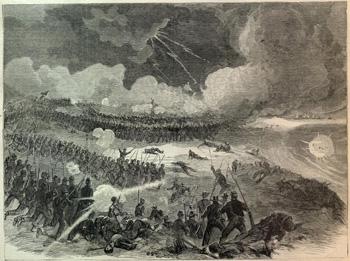
As the Federal assault swept ever closer to the ramparts of Fort Wagner, the day-long bombardment sputtered and died. Quickly, Taliaferro’s gray-clad defenders took their battle stations, artillerists ramming charges down half a dozen guns that had survived the shelling unscathed. The infantry leveled their muskets, and when the Yankees were within 150 yards, Taliaferro gave the order to fire.
‘A sheet of flame’ flashed out, James recalled, ‘followed by a running fire, like electric sparks!’ The blazing muskets and cannons reminded James of the fireworks he had seen illuminating the Arc de Triomphe during a Paris Bastille Day celebration. But the thud of hot lead into human flesh, and the screams of the dying, brought home the terrible reality of what lay before them. With a flourish of his sword, Shaw led his black soldiers into the vortex.
With men falling on all sides, the 54th surged over the sharpened wooden stakes that ringed the fort and through the water-filled ditch. In some places, shelling had filled the moat with sand, while elsewhere the water was knee- to-waist-deep. Hallowell and James were among those who fell wounded before gaining the ramparts, but Shaw kept his feet, clambering up the sandy slope with a knot of determined survivors. As he crested the flaming parapet, Shaw waved his sword, shouted ‘Forward, 54th!’ and then pitched headlong into the sand with three fatal wounds.
Sergeant William Carney was sprinting through the chaos when he saw the man bearing the American flag stumble and fall. Carney threw away his musket, raised the flag, and scrambled up the bullet-swept slope of the fort. A shower of hand grenades leveled the ranks around him, but Carney gained the crest, where it seemed he was the only man left standing. He knelt and gathered the folds of the flag, while the battle raged on all sides.
Unable to breach the defenses, many soldiers began to retreat, while others fired across the ramparts in a pointblank duel with the Charleston Battalion and the 51st North Carolina. Two captains of the 54th fell dead, one across the other, while Sgt. Maj. Lewis Douglass-son of the black abolitionist-had his sword ripped from his side by a canister shot.
As a Confederate later commented, he and his comrades were ‘maddened and infuriated at the sight of Negro troops:’ And indeed, no quarter was given by either side. At one point a Southerner ripped the white Massachusetts banner from its staff, only to have it snatched back in hand-to-hand combat. After the battle, the bloodied flag would be found under a pile of dead men in the ditch.
The 54th Massachusetts had been shattered, but now the rest of Strong’s brigade came charging up to the moat five regiments, each in column of companies, with the 300 men of Colonel John L. Chatfield’s 6th Connecticut in the vanguard.
Chatfield’s leg was shot from under him, and he was crawling rearward when another bullet knocked his sword from his hand. Private Bernard Haffy threw himself between his stricken commander and the hail of bullets, then began dragging Chatfield back down the beach. Many of the Connecticut men fell before reaching the ramparts, but Color Sergeant Gustave De Bonge bore the regimental banner to the crest, followed by more than 100 madly cheering New Englanders. De Bonge planted the flagstaff in the sand, then toppled over dead with a bullet between the eyes. The flag was raised, shot down, then raised again.
As fate would have it, the 6th Connecticut had struck the Confederate earthwork at its weakest point. Demoralized by the long bombardment, the 31st North Carolina had failed to occupy their appointed post in Wagner’s southeast bastion. Taliaferro frantically rounded up more steadfast soldiers, while the 51st North Carolina and the Charleston Battalion poured an oblique fire into the determined Union assailants.
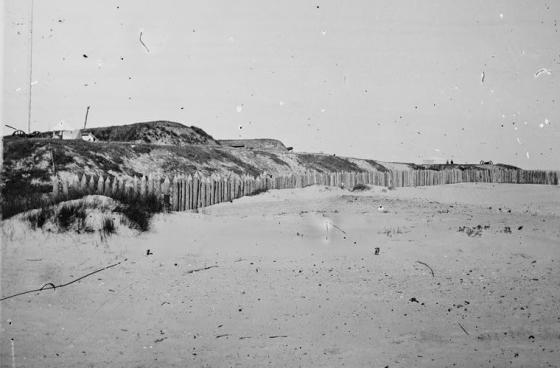
Soldiers of the 48th New York succeeded in following the Connecticut troops up the slopes of the southeast bastion, but few of Strong’s remaining units were able to get that far. Three Confederate howitzers had come into action on the flanks of the attacking forces, and the deadly hail of canister brought the 3rd New Hampshire, 76th Pennsylvania Zouaves and 9th Maine to a bloody standstill atop a ridge of sand just beyond Wagner’s moat. ‘It was almost impossible to pass over that ridge and live five seconds,’ recalled 76th Pennsylvania Colorbearer S.C. Miller.
Strong collared Miller and tried to get the charge moving again. A group of men led by 3rd New Hampshire Colonel John Jackson started forward with the general and the flag, but were mowed down by a salvo of canister shot. Miller survived unscathed, but his flag was riddled. Jackson’s coat was torn from his body, while another of the iron balls ripped through Strong’s thigh-an injury that would ultimately prove fatal. In shock and pain from his wound, Strong gave the reluctant command, ‘Retreat in the best order you can!’
In fact, the leading Union brigade had dissolved in inextricable chaos, some running for the rear, others yelling, fighting and dying in the darkness. ‘The genius of Dante could but faintly portray the horrors of that hell of fire and sulphurous smoke,’ one officer recalled, ‘the agonizing shrieks of those wounded from bayonet thrust, or pierced by the bullet of the rifle, or crushed by fragments of exploding shell, sinking to earth a mass of quivering flesh and blood in the agony of horrible death!’
It was 8:30 p.m.–more than half an hour after the charge began-before Haldimand Putnam brought the second brigade to Strong’s aid. Furious at the delay, Seymour sent his chief of staff galloping to where Putnam’s troops stood in column on the beach. Putnam claimed that Gillmore had ordered him to wait where he was, but acceded to Seymour’s frantic plea and started his four regiments forward.
Putnam’s 7th New Hampshire, 505 strong, pushed its way through the shaken fugitives of the earlier waves and reached the moat, where, in the words of a survivor, ‘all regimental action ceased, and each action seemed an individual one:’ Private Stephen Smith was clambering down into the ditch when his left thigh was shattered–a compound fracture that left him sprawled on his back atop a dead man, his broken leg pinned beneath his body. Beside him the casualties lay three and four deep, some drowning in the sea water that filled the moat with the rising tide.
The tragedy unfolding on the flaming bastion was now compounded by the actions of the 100th New York Regiment, whose commander, in defiance of orders, had told his men to cap as well as load their pieces. Their ranks savaged by the ensuing holocaust, the New Yorkers poured a ragged volley into a mass of men silhouetted on the ramparts. Caught between two fires, scores of Federals went down, and a cry of rage and anguish rose above the crash of battle. Frantic shouts of ‘Don’t fire on us!’ went unheeded, and some Federals answered the mistaken volleys with shots of their own. Nursing a shattered elbow, 48th New York Private Joseph Hibson scrambled back down the rampart to check the deadly fire of the 100th New York, then returned to the battle in time to seize his regimental colors from a fallen bearer. The staff was shot in half, and Hibson’s injured arm was broken a second time, while fragments from an exploding shell gashed his scalp. Still, the bloodied 20-year-old private was able to save the flag–a deed that would earn him the Medal of Honor.
The last of Putnam’s regiments, the 67th and 62nd Ohio, managed to get another 100 men across the moat and onto the southeast bastion. Then Putnam himself arrived, having been delayed when his horse was shot from under him in the advance. The colonel took charge of the beleaguered force, but was unable to organize a cohesive defense in a chaos in which no two men seemed to be from the same company, let alone the same regiment. In the words of one survivor, the bulletswept bastion was a ‘carnival of death,’ and a ‘hell of terror.’ Another man would never forget the sight of slain Lt. Col. James Green of the 48th New York, whose glassy eyes and smoldering beard were illuminated by the flashes of the guns.
Putnam and his officers sent messengers back through the maelstrom of fire to bring up fresh troops. But Brig. Gen. Thomas Stevenson’s 3rd Brigade never arrived. Seymour had been severely wounded by a canister shot, and Gillmore was increasingly out of touch with the situation. Reinforcements may well have enabled the Federals to carry Wagner, but they were not forthcoming and, sensing victory, the Confederates began to launch counterattacks of their own.
Using the roof of Fort Wagner’s bombproof as a makeshift breastwork, the Federals were able to beat off two attacks by gunning down the Southern officers who led them. But time was clearly running out. Putnam had just turned to Major Lewis Butler of the 67th Ohio and said, ‘We had better get out of this!’ when a bullet blew off the back of the colonel’s head. After a hasty consultation with the surviving officers, Butler began an evacuation of his troops-first the bearers of the precious regimental flags, then every other man and, finally, a last mad dash for safety. Many never got the word and continued to fight until forced to surrender.
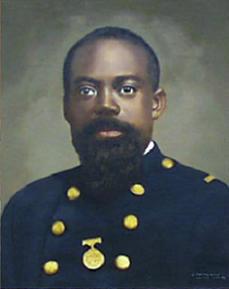
The Federal collapse coincided with yet another counterattack by Taliaferro’s garrison, bolstered by fresh troops of the 32nd Georgia, who had been transported to Morris Island under the command of Brig. Gen. Johnson Hagood. The Confederates surged over the southeast bastion, killing or capturing every Yankee who remained. By 10:30 p.m., the desperate fight for Fort Wagner was over.
Stevenson’s belated preparations to commit yet a third wave to the charge on Wagner were rendered moot by the crowds of bleeding, powder-stained survivors who blocked his path. Confederate shells continued to sweep the beach, and as the battered remnants retreated, still more men fell victim to the unrelenting fire. Wounded adjutant James of the 54th Massachusetts was being borne from the field when a shell decapitated one of his stretcher bearers. Carney had managed to get the 54th’s colors away from the fort in safety, though he was shot twice in the process. Like Hibson of the 48th New York, Carney’s fidelity to the flag would win him the Medal of Honor.
Daylight revealed the full extent of the Federal disaster. ‘In front of the fort the scene of carnage is indescribable,’ Taliaferro wrote. ‘I have never seen so many dead in the same space.’ At a cost of 36 killed and 145 wounded and missing, Taliaferro garrison had inflicted more than 1,500 casualties on their assailants. The brave soldiers of the 54th Massachusetts had sustained the heaviest loss–281 men, of whom 54 were killed or fatally wounded, and another 48 never accounted for. But the other regiments had paid almost as great a price. The 7th New Hampshire alone counted 77 killed or mortally wounded, 11 of whom were officers.
The Confederates stripped the slain of useful apparel and souvenirs, then piled the dead into mass graves. Shaw was singled out for what the Southerners considered the ultimate insult-by being interred with his fallen black troops.
Gillmore had learned a bloody lesson. Fort Wagner could never be taken by direct assault, but must be gradually besieged, the noose tightened until the Confederate garrison was forced to surrender or evacuate. Nearly two months of grueling siege work finally gained Gillmore his prize, though even then he was denied the full fruits of victory. On the night of September 6, 1863, the defiant Confederate garrison abandoned Fort Wagner and Battery Gregg under cover of darkness, leaving their opponents a heap of sand, and a legacy of valor.

